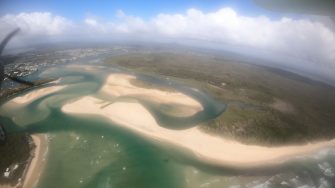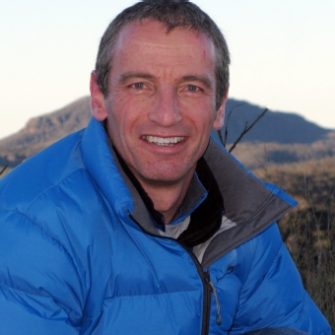
Date: Wednesday 4th October 2023
Project: Eastern Australian Waterbird Survey
Observers: John Porter (NSW DPE), Shannon Dundas (NSW DPI)
Trainee: Chris Sanderson (Qld DES)
Pilot: Thomas Clark
Rain showers greet us on day two of the survey as we head into the hills west of Maroochydore, to count over some water storages and dams; we find low numbers of waterbirds mainly Black Swans, egrets, Black Duck, Grey Teal and Masked Lapwings. From here we head to the coast and count the estuarine Lake Weyba and parts of the Noosa estuary where we find low numbers of birds in this highly developed catchment.
Surveying Lake Weyba
Lake Weyba
Noosa estaury
Noosa
As we head north along the coast we are treated to the sight of dugongs grazing on seagrass meadows, dolphins lolling in the warm surface water, and a few turtles and whales in the waters near Fraser Island.
Fraser Island
North of Bundaberg we count over the Burnett River and Baffle Creek estuaries and find reltively low numbers of waterbirds - mainly cormorants, egrets, Pelicans and terns.
North of Baffle Creek
After refuelling at Gladstone we continued northward and surveyed the floodplain wetlands of Herbert Creek and the Styx River where we found plenty of action! Some of these nationally important wetlands support thousands of waterbirds – the species diversity is high with Black Duck, Grey Teal, Hardhead, Wood Duck, Pygmy Geese, egrets, spoonbill, Pelicans, Black Swans, White and Glossy Ibis, Masked Lapwings, terns and Brolgas all abundant.
Our final survey sites are on and around the floodplain wetlands of Goorganga Plains south of Proserpine. Several of these wetlands contain thousands of waterbirds, mainly Black Duck, Magpie Geese, egrets, Black Swans and migratory waders but their numbers are less than other years and many of the freshwater billabongs are drying back after several wet years.

